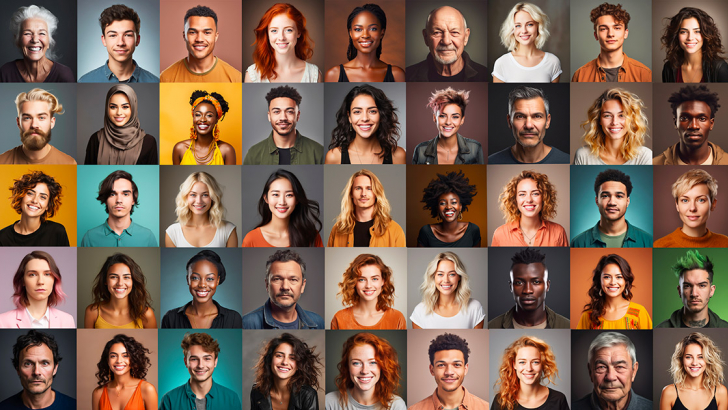SCIENZA E RICERCA
Gender violence and adherence to the traditional model of masculinity

When men address the issue of violence perpetrated by men towards women and other gender minorities, one may feel called out and want to disassociate themselves from such portrayal of violent men. "Not all men" - one may hear - "Not all of us are like that." There are also those who take the opportunity to remind us that "We also suffer, but people don’t talk about men's problems". If these statements resonate with you, this article is for you.

These are often complaints that do not translate into constructive attempts at confrontation and change. In the absence of adequate supportive spaces networks, these men's perceived hardships risk being intercepted by misogynistic and hate-mongering groups such as Men's Rights Activists. But let's take a step back and ask ourselves: What are the problems that men experience? What do these hardships have to do with violence?
To answer these questions, it is appropriate to begin by discussing masculinity. Masculinity refers to the set of social roles, behaviors, and meanings associated with being male in a given historical and cultural context (Kimmel, 2005). In turn, the expression "toxic masculinity" has become popular in media language, and in recent years in academic language as well. As C. Harrington (2021) argues, when defining "toxic masculinity", violent, dominant, misogynistic, and homophobic behaviors are often mentioned. Thus, there is a tendency to apply the label "toxic masculinity" to some men exhibiting these characteristics, but we risk individualizing the problem of gender violence instead of looking for systemic explanations. As we have seen in previous articles, circumscribing the causes of violence only to individual factors is reassuring but limiting: gender violence is historically and culturally rooted and involves structural and situational power relations.
With these power relations in mind, it is therefore appropriate to speak of "hegemonic masculinity". According to sociologist R.W. Connell (2005), hegemonic (dominant) masculinity is not a personality type, but rather a set of practices, norms and social expectations that define the most desirable model of manhood a man should aspire to, in a given cultural-historical context, in order to gain social prestige. It is therefore a model that prevails over other models of masculinity, subject to historical change and geographically specific. The hegemony of one model of masculinity is established through various means, such as institutional and economic power, cultural consensus and media messages, gender relations, and delegitimization of alternative models - also through the use of force. According to Connell, there are a set of social practices that enable a group of men to maintain a hegemonic position, including subordination and complicity. Subordination stands for specific gender-based relations of dominance and subordination between men and women, and between different groups of men. Nowadays, in modern Western societies, it is not only women who are subordinated but also those masculinities which fail to conform to the hegemonic one, such as homosexual or transgender men, men with disabilities, non-white men, but also cisgender and heterosexual men who are not "masculine" enough according to cultural norms. Subordination practices include political and cultural exclusion, economic discrimination, legal and street violence, up to harassment and murder. On the other hand, subordinate groups can show complicity with the hegemonic group: even men who do not personally conform to cultural standards of masculinity can still benefit from the "patriarchal dividend" (that is, the advantage that the male gender gains from the overall subordination of women and other gender minorities) without being overtly sexist, but still being complicit in a system of oppression.
When it is said that men are generally "privileged" in the current social order it happens to be met with resistance. As M. Kimmel (2005) argues, this is because privilege is invisible to those who hold it. The difficulty in recognizing one's position of privilege, however, is not the only explanation for this intolerance. In her book Uomini Duri, G. Pacilli (2021) explains how part of this resistance stems from men's perception that they carry a considerable burden associated with being men on their shoulders. Such burden derives from the pressure to conform to a cultural and ideal model of traditional masculinity in order to be socially appreciated. The model of traditional masculinity - which is culturally connoted and therefore changeable - can be defined by a series of norms or mandates: antifemininity, that is, to remove from oneself anything that might be considered "feminine" ("Don't cry, be a man!"); heterosexuality and compulsive interest in (strictly heterosexual) sex, with women often reduced to mere sex objects (topic of the next article); taking a dominant and "stoic" attitude, without letting any emotions show; having a propensity for risk-taking; showing oneself to be successful. These norms become salient when a man is in a condition of threat to his masculinity - that is, when someone doubts that he is a "real man".

Research has shown that under conditions of threat to one's masculinity, men tend to act according to traditional norms in order to restore their masculinity, for instance by adopting risky, aggressive and even harassing behaviour towards women. Furthermore, the higher the adherence to traditional masculinity norms, the more men tend to support violence and harassment of women. However, adherence to traditional masculinity norms results in important repercussions on the mental and physical well-being of men themselves. To give just a few examples, compared to women, men have a lower and less healthy life expectancy; they do less preventive behaviours and engage in riskier conducts; they seek less professional help regarding their physical or psychological health problems; and report higher rates of suicide. Maintaining an image of imperturbable invincibility is incompatible with one’s recognition and expression of emotions, which are inhibited - thus easily leading to a short-circuit.
How, then, can we break out of this vicious cycle that is harmful to society as a whole? In recent years, more and more men are expressing frustration with the traditional "macho" model of masculinity and are seeking alternative, more flexible and free behavioral models: providing opportunities for education and discussion about gender norms and their impact in our lives is therefore an important first step in achieving this goal.




